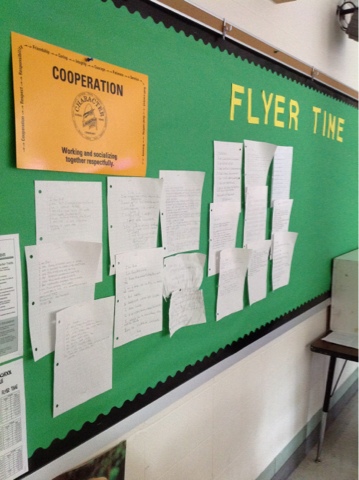 In this second grade classroom, students help design the objective for the day/subject. This is a simple way to get students to have input and to reinforce purpose behind their learning.
In this second grade classroom, students help design the objective for the day/subject. This is a simple way to get students to have input and to reinforce purpose behind their learning. This 1st grade writing center gives kids samples they can reference. Notice how they have different genres of writing and different levels of expectations. This helps kids feel more comfortable with the writing choices they make.
This 1st grade writing center gives kids samples they can reference. Notice how they have different genres of writing and different levels of expectations. This helps kids feel more comfortable with the writing choices they make. In this primary classroom, students have a quick visual of their expectations. This is their rubric with anchor examples to guide them in their own work.
In this primary classroom, students have a quick visual of their expectations. This is their rubric with anchor examples to guide them in their own work. In elementary school, students work on building their reading and writing stamina. In some classes this is written as a goal, but overall, it's a good method to build student confidence and increase their learning/practice over time.
In elementary school, students work on building their reading and writing stamina. In some classes this is written as a goal, but overall, it's a good method to build student confidence and increase their learning/practice over time. QR Codes are used to provide direction for student centers. What a great way to save paper and have consistent expectations for how students can use extra time in the future.
QR Codes are used to provide direction for student centers. What a great way to save paper and have consistent expectations for how students can use extra time in the future.
I love the opportunities I have to see what learning looks like at different levels. It's inspiring to see what our kids have done in the past and opens the door for us to think about what they can do in the future!























